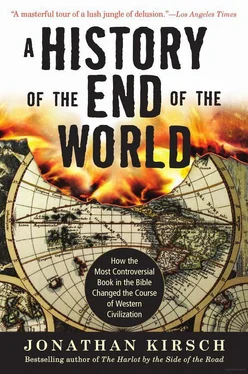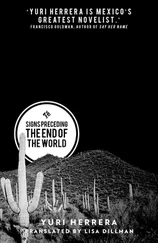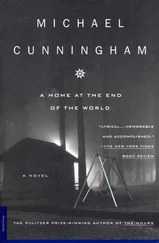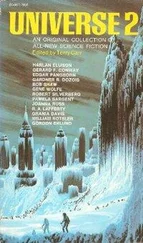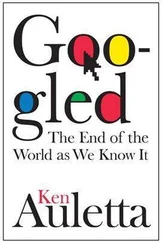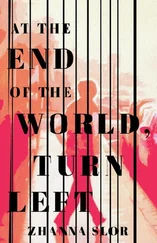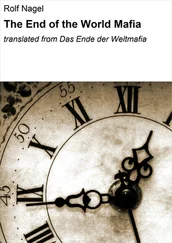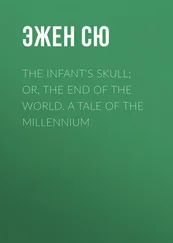Somewhere between these two realms—the prophets whom we are taught to take seriously, and the prophets whom we are inclined to regard as dangerous lunatics—lays a kind of no-man’s-land of religious imagination and speculation. Here we find a colorful assortment of eccentrics and ecstatics who asked their contemporaries to believe that the secret things of God had been revealed to them after all. Among them is the author of Revelation, and we will see that his visions are deeply rooted in the soil of that spooky landscape.
To understand Revelation at all, in fact, we have to explore the far older and even odder writings that shaped the imagination of its author. He apparently knew and loved many of the earlier apocalyptic writings, and he borrowed freely from them. Some of the most puzzling and perplexing passages of Revelation, in fact, snap into sharp focus when they are viewed through the lens of the apocalyptic tradition. The biblical book that is sometimes known as “ The Apocalypse,” as we shall see, is only one of many apocalypses.
“Apocalypse” is one of the various titles that appear on ancient manuscripts of the last book of the New Testament, but the same word is also used by scholars to identify any text in which the author describes the secret knowledge that has been revealed to a human being by a supernatural figure of some kind. The book of Revelation, then, is an apocalypse, but it is hardly the first or only one; a whole library of apocalypses, some composed long before Revelation and some long after, has accumulated over the centuries. A Jewish source from the first century, for example, apparently knew of some seventy apocalypses that were already on offer at the moment in history when Revelation first appeared.
All but two of the apocalypses that have survived from antiquity were wholly excluded from the Bible as it is known and used in both Jewish and Christian tradition. The only exceptions are the book of Daniel in the Hebrew Bible, and the book of Revelation in the New Testament. Indeed, the extrabiblical Jewish apocalypses were shunned by the rabbis of late antiquity who were the custodians of Jewish texts. Ironically, weird but illuminating Jewish writings such as The Book of Watchers and The Animal Apocalypse survive only because they were preserved and studied by ancient Christian scholars and theologians.
Some of the strangest apocalyptic texts, in fact, were lost to both Christians and Jews until they were rediscovered and retrieved in the twentieth century. Apocalypses were found among the Dead Sea Scrolls at a site called Khirbet Qumran in the Judean desert, for example, and the buried archive of Gnostic texts at Nag Hammadi on the banks of the Nile River in Egypt. Many of the earliest apocalyptic writings came to be included in a collection of ancient texts known to scholars as Pseudepigrapha—that is, “false writings,” a term that refers to the fact that they are often ascribed to biblical figures who manifestly did not write them.
Strictly speaking, an apocalypse might reveal all kinds of “secret things,” including mysteries and marvels that have nothing to do with the end of the world. Typically, the author of an apocalypse will start by describing a visitation by God or an angel or some other heavenly creature. The visitor from on high might conduct the author on a “guided tour” of the heavens, or grant the author a vision of Jerusalem as it will appear in the far-distant future, or show the author some “cosmological wonder” like the “storehouse of winds” or the “cornerstone of the earth.” 7Sometimes the spectral visitor will allow the author to glimpse a parallel universe that is ordinarily hidden from the eyes of ordinary human beings. And sometimes the visitor will reveal the inner meaning of God’s secret master plan for humankind, including the significance of events that have already happened and events that are yet to come—that is, both “past history” and “future history.” 8
But the key concern in most (if not all) apocalyptic writings is the “eschaton” or end-times—that is, how and when the world will end. And curiosity about the end-times is an outgrowth of one of the great theological innovations of Judaism. The pagan civilizations of antiquity, according to a certain conventional wisdom, saw the world as an endless cycle of birth, death, and rebirth—“the eternal return of the same,” according to Friedrich Nietzsche’s memorable phrase. 9But the authors of the Hebrew Bible embraced the revolutionary new idea that the God of Israel is a deity who works his will through human history—and history, like any well-crafted story, has a beginning, a middle, and an end.
“An apocalypse only makes sense,” explains contemporary historian Rennie B. Schoepflin, “in a universe ruled by a God of history.” 10
The end-times as they are imagined in both Jewish and Christian apocalyptic tradition have certain features in common—an ordeal of human suffering at the hands of a satanic oppressor, the arrival of a divine savior or redeemer, a final battle between the forces of good and evil, a resurrection of the dead, a day of judgment, and, finally, the advent of a new and eternal era of divine perfection, sometimes right here on earth and sometimes in a heavenly realm. All of these story lines figure prominently in the book of Revelation, of course, but they are also found in far older texts that were already being read long before the Christian era.
In fact, the apocalyptic tradition dates back at least several centuries before Revelation was set down in writing, and—as it turns out—the idea was not confined to the Judeo-Christian world. Contrary to Nietzsche’s assertion, speculation about the fate of the world in the far-distant future can be found in the pagan writings of Mesopotamia, Egypt, Greece, and Rome. For example, the Sibylline Oracles—the enigmatic utterings of women who were believed to possess the divine gift of prophecy—were routinely consulted throughout the classical pagan world to predict the fate of both human beings and empires. The practice was so unsettling to Augustus, the first Roman emperor, that he ordered the confiscation and incineration of two thousand copies of the Sibylline Oracles—an example of how dangerous the pursuit of “future history” could be. 11
Some scholars argue that the apocalyptic tradition can be linked to far older and even more exotic sources. Many of the end-of-the-world auguries that appear in the Bible—“the signs and tribulations of the end, the struggle of God and his Messiah against evil, [and] the figure of Satan and his demons” 12—can be traced all the way back to the Zoroastrian writings of Persia, the earliest of which may be several hundred years older than any of the Jewish or Christian texts. For that reason, the birthplace of the apocalyptic idea, and much else that we find in the so-called Judeo-Christian tradition, may have been ancient Persia rather than the Holy Land.
The first apocalyptic authors, then, may have been familiar with “protoapocalypses” that originated outside the land of Israel and served as “models and sources” for the apocalyptic tradition whose highest expression is the book of Revelation. 13And it is tantalizing to speculate on exactly how the eerie and exotic visions of Egyptian priests, Persian magi, and Greek sibyls may have insinuated themselves into the heart and soul of the Jewish and Christian scriptures. Still, the “models and sources” that inspired the book of Revelation are much closer at hand: they are to be found in the biblical writings of ancient Judaism that the author of Revelation knew, loved, and copied.
Some of the most familiar figures and scenes in the book of Revelation, in fact, can be traced back to specific passages of the Hebrew Bible—Satan, the demonic armies of Gog and Magog, the Day of Judgment, the end of the world, and much else besides. When we read what is plainly written in the source texts, however, it is clear that the author of Revelation did not feel obliged to remain faithful to what he regarded as Holy Writ. Rather, he felt at liberty to embroider upon or wholly reinvent what he found in the pages of the Bible, and he borrowed ideas and images from far stranger sources, or, perhaps even more likely, he did both at once.
Читать дальше
